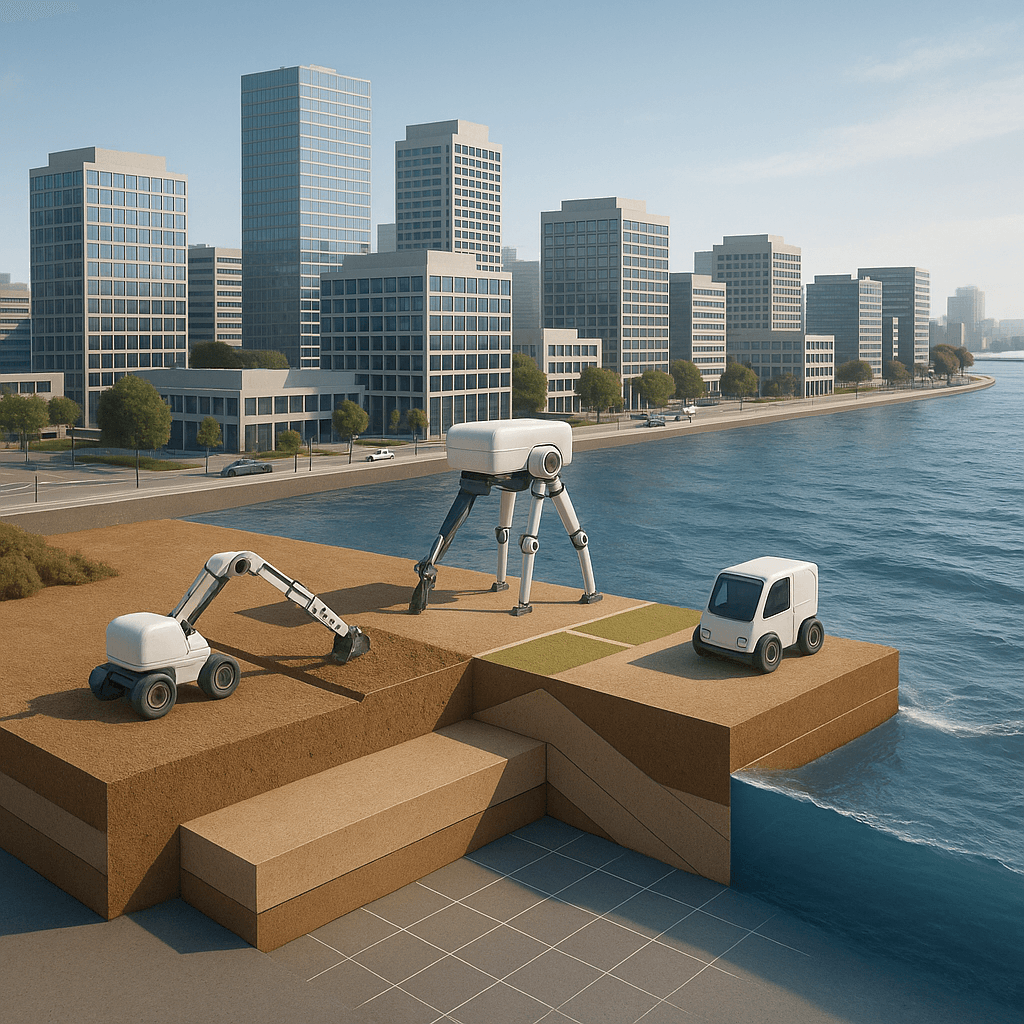A startup called Terranova just closed a $7 million seed round to deploy terraforming robots that literally lift cities out of flood zones. Instead of building expensive seawalls, the company injects wood waste slurry underground to raise sinking neighborhoods - starting with San Rafael, California, where some areas have dropped three feet below sea level.
Terranova is tackling one of climate change's most expensive problems with an audacious solution: if cities are sinking into rising seas, why not just lift them back up? The startup just secured $7 million in seed funding to deploy autonomous robots that inject wood waste slurry underground, literally raising the ground level to protect vulnerable communities.
The company's first target is personal for CEO Laurence Allen - his hometown of San Rafael, California. Parts of this Bay Area city sink half an inch annually, with the Canal District now sitting three feet below its original elevation. "The canal district is really far under sea level," Allen told TechCrunch. "Every consultant's answer has been $500 million to $900 million of seawalls, which San Rafael simply can't afford."
The funding round, led by Congruent Ventures and Outlander VC with participation from GoAhead Ventures, Gothams, and Ponderosa, values the company at $25.1 million. It's an oversubscribed round that signals investor confidence in climate adaptation technology as traditional flood defenses become prohibitively expensive.
Terranova's approach centers on robotic injection systems that autonomously navigate work sites, drilling wells 40 to 60 feet deep. The robots pump a proprietary wood waste slurry from 20-foot shipping containers, using algorithms to determine precise injection patterns. The wood mixture consolidates in about two hours, permanently raising the ground level.
The economics are compelling. While seawalls for San Rafael would cost up to $900 million, Terranova quotes $92 million to lift 240 acres by four feet. That's possible because waste wood is abundant and cheap, while the robotic systems reduce labor costs dramatically compared to traditional construction.
But the technology goes beyond simple injection. Terranova has built software that combines public geographic data with California's extensive well-core database to create detailed subsurface models. City planners access a "SimCity-like tool" to design elevation changes, which then guide the robotic fleet through genetic algorithms that optimize injection patterns.












